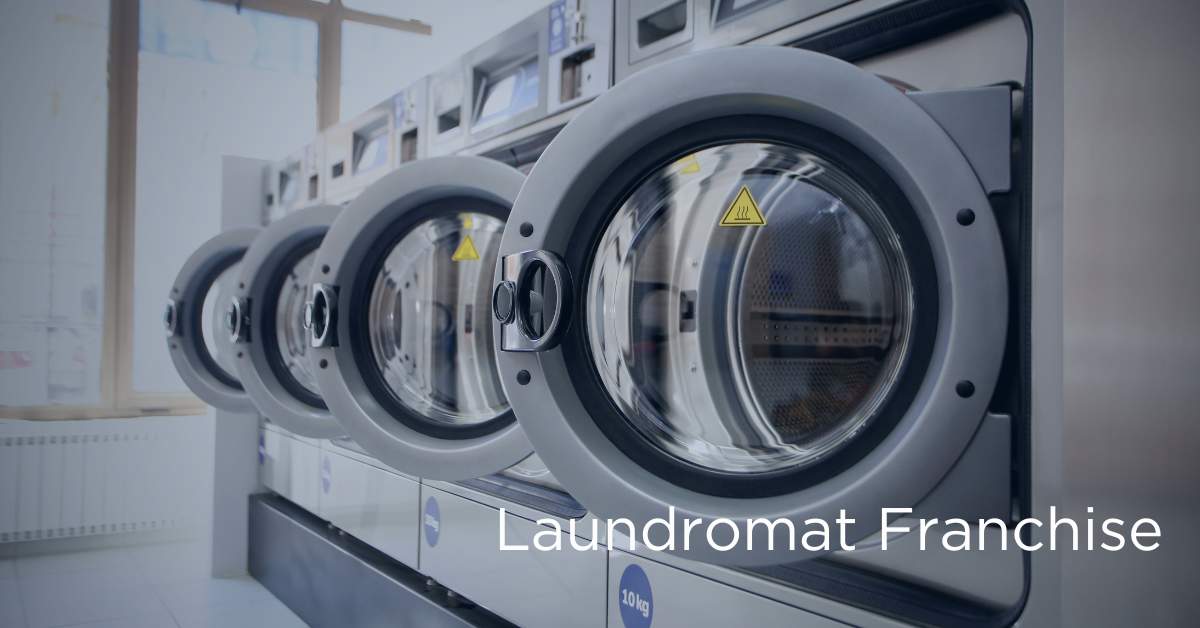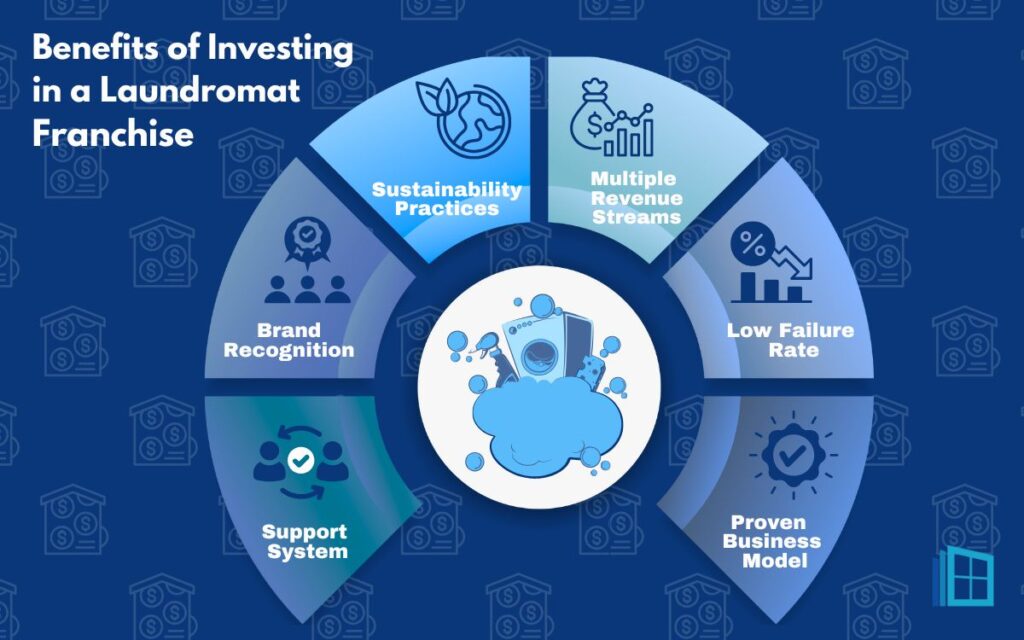Laundromats aren’t just rows of coin-fed machines anymore. They’ve leveled up—think comfy seating, Wi-Fi, eco-friendly systems, and even coffee bars. Today’s laundromat is part cleaning service, part community hub. For entrepreneurs looking for a steady, recession-resistant business, investing in a laundromat franchise could be a smart, suds-filled move.
Why? Because franchising in this space means you’re not starting from scratch. You get a recognizable brand, marketing muscle, and a playbook that works—all with relatively low startup costs and solid ROI potential.
In this blog, we’ll highlight seven standout laundromat franchise opportunities available across the U.S. right now. From tech-savvy setups to green-clean options, you’ll get a sense of what’s out there and what to look for as you choose the right fit for your goals.
What is a Laundromat Franchise?
A laundromat franchise lets you open a laundry business using an established brand’s name, systems, and support. Instead of building everything from scratch, you follow a proven model that’s already working for other laundromat owners.
This kind of setup is popular in the laundromat business industry because it lowers the risk for first-time business owners. You’ll get help with choosing a location, training your team, and even financing. Most franchisors also connect you with reliable laundry equipment—think heavy-duty laundry machines from brands like Speed Queen or Maytag.
Before jumping in, it’s important to review the franchise agreement. This document explains what you’re responsible for, what support you’ll get, and the franchise fees involved. It’s smart to have a lawyer take a look so you understand exactly what you’re signing.
Laundromat franchise investing is a solid option for people who want a business with consistent demand. By following the franchisor’s playbook, you’ll be better equipped to run a smooth operation and meet the needs of today’s busy customers.
Benefits of a Laundromat Franchise
The laundry industry keeps spinning—literally. It’s steady, essential, and full of opportunity. If you’re thinking about getting into it, investing in a laundromat franchise comes with some major perks.
A Proven Business Model
Franchises take the guesswork out of starting a business. You’re working with a system that’s already been tested—and proven—to succeed. Instead of reinventing the wheel, you follow a roadmap that works.
Support from Day One
From picking the right location to training your team, franchisors walk you through every key step. They even help with licenses and getting your grand opening off the ground. You’re not in it alone.
Built-In Brand Power
Well-known names like Zoom Express Laundry and WaveMAX Laundry already have a loyal customer base. That brand recognition means people are more likely to trust you—and walk through your doors.
Lower Risk, Higher Confidence
Compared to going solo, different laundromat franchises tend to have a lower failure rate. That’s thanks to solid systems, expert guidance, and a proven track record.
More Ways to Make Money
Laundromat franchises often include extras like vending machines, dry cleaning drop-off, and laundry bag rentals. These add-ons create multiple revenue streams and help boost your bottom line.
Go Green, Save Green
Many franchises focus on sustainability. They use energy-efficient laundry machines and eco-friendly practices. It’s good for the planet—and great for reducing your long-term costs.
Affordable Entry Point
While the franchise fee and initial costs vary, many laundromat franchises are more affordable than other types of businesses. That makes it easier for first-time owners to get started.
7 Unique Laundry Business Ideas
The laundry industry isn’t what it used to be—and that’s a good thing. Today’s laundromat franchises are evolving into smart, profitable, and customer-centric operations.
If you’re looking to break into a lucrative industry with solid growth potential, these creative concepts offer exciting ways to stand out and enhance customer convenience.
1. Hybrid Laundromats
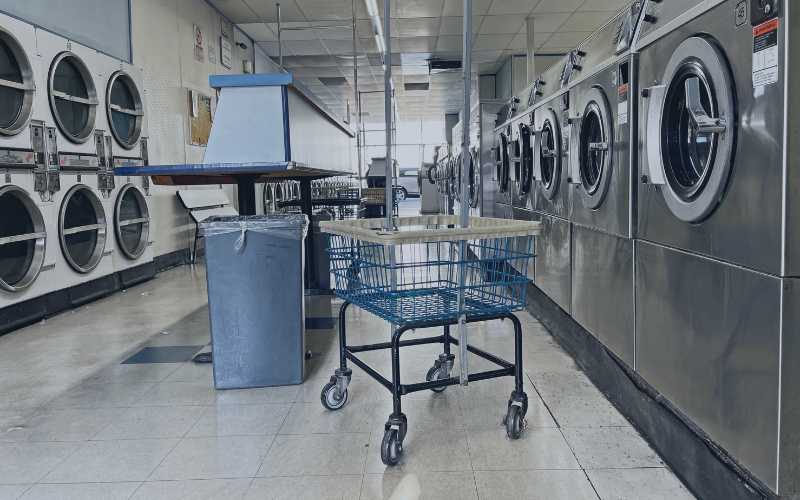
Hybrid laundromats combine laundry services with lifestyle perks—think coffee bars, vending machines, or lounge areas with Wi-Fi. The idea? Turn a boring chore into a better experience.
Example Franchise: Zoom Express Laundry
This express laundry center blends high-tech laundry machines with comfort-focused features like mobile payments and cozy seating.
Unique Features:
Brands like Speed Queen and Maytag provide energy-efficient laundry equipment to reduce costs and improve service.
Pros:
- Appeals to students, families, and remote workers
- Increases foot traffic with added amenities
- Encourages repeat business through enhanced customer experience
Cons:
- Requires more space and capital
- Higher utility and maintenance costs
- Operations are more complex
Hybrid laundromats are a smart move for franchisees who want to differentiate in a lucrative industry while creating a space that truly enhances customer convenience.
2. Pet Laundry Services

Pet laundry services offer a solution for washing pet beds, toys, and fur-covered items that can clog regular washers. It’s a niche market, but one with loyal—and grateful—customers.
Example Franchise:
Many laundromat owners are adding pet-washing stations or creating pet-specific locations.
Unique Features:
Eco-friendly machines and cleaning products ensure pet safety and environmental responsibility.
Pros:
- Minimal direct competition
- Strong appeal to pet-loving households
- Builds local community engagement
Cons:
- Equipment and maintenance can cost more
- Marketing is essential to build awareness
- Best suited for pet-friendly areas
Pet laundry services offer entrepreneurs an opportunity to tap into a niche market with strong growth potential, especially in urban or pet-centric areas.
3. Subscription-Based Services

This business model offers monthly laundry packages, giving customers predictability and saving them time. For laundromat owners, it creates reliable, recurring revenue.
Example Franchise:
Many express laundry center brands now offer digital subscriptions with mobile scheduling and app-based tracking.
Unique Features:
Streamlined payment systems and customizable plans for convenience-focused users.
Pros:
- Predictable income stream
- Increases repeat business
- Easy to scale with tech tools
Cons:
- Must invest in software and app development
- Customer retention is key
- Walk-ins may get lower priority
Subscription models are perfect for entrepreneurs who want to lean into technology to enhance customer convenience while building dependable cash flow in a lucrative industry.
4. Eco-Friendly Laundromats
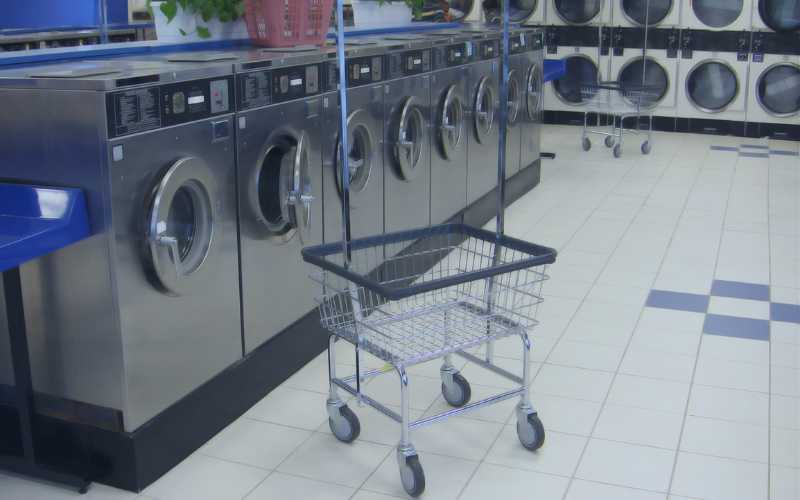
Green is good—and customers know it. Eco laundromats use energy-efficient machines, water-saving tech, and green cleaning products to cut costs and emissions.
Example Franchise: Eco Laundry Company
Known for sustainability, this brand uses solar energy and biodegradable laundry bags.
Unique Features:
Lower utility bills and a cleaner conscience.
Pros:
- Attracts eco-conscious customers
- Reduces long-term operating costs
- Positions the brand as forward-thinking
Cons:
- Upfront investment in green tech
- Requires sustainability compliance
- It may take longer to recoup costs
Eco-friendly laundromats are a great fit for investors who want to blend profits and purpose in a lucrative industry—all while enhancing customer convenience with better technology.
5. Mobile Laundromat Services
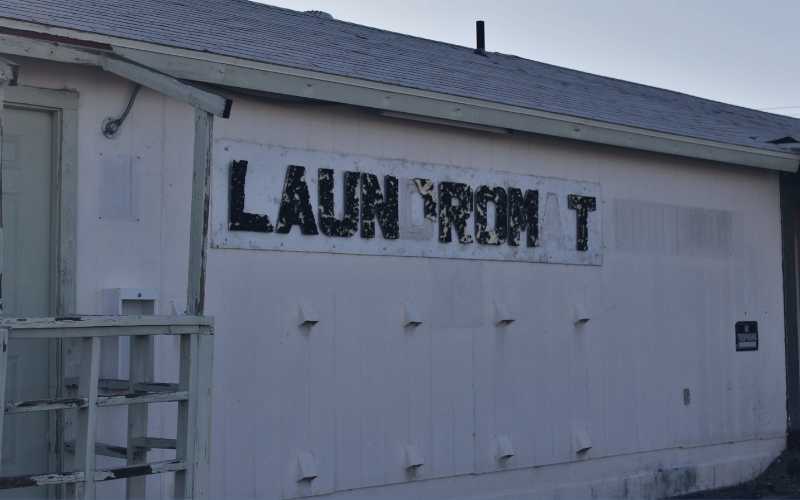
Why go to the laundromat when the laundromat can come to you? Mobile units bring laundry services directly to customers—saving them time and effort.
Example Franchise:
Outfitted vans or trailers feature energy-efficient machines, mobile scheduling, and on-demand pick-up.
Unique Features:
Low overhead, no storefront, and ultimate flexibility.
Pros:
- Major convenience for busy households
- Low startup and operating costs
- Ideal for cities with high density
Cons:
- Limited daily capacity
- Routes must be carefully planned
- Insurance and vehicle upkeep can add costs
This model is built to enhance customer convenience and meets modern consumers where they are—literally. It’s a nimble way into a lucrative industry without the burden of a full brick-and-mortar setup.
6. Luxury Amenities

Luxury laundromats bring high-end flair to the laundry game. Think concierge folding services, spa-like lounges, and premium detergents.
Example Franchise:
Upscale laundry centers with advanced weighing systems, modern interiors, and staff trained for premium service.
Unique Features:
Top-tier customer service and a polished environment that customers will actually enjoy.
Pros:
- Attracts high-income clientele
- Creates strong brand loyalty
- Allows for higher price points
Cons:
- Expensive to build and maintain
- Requires excellent service standards
- Not suitable for all markets
This model gives laundromat franchises a way to enhance customer convenience while positioning themselves at the top of a lucrative industry.
7. Community-Focused Laundromats

These are more than just laundry centers—they’re neighborhood hubs. Whether it’s free laundry days, workshops, or nonprofit partnerships, these franchises make a real local impact.
Example Franchise:
Some brands host back-to-school drives or offer services to low-income families, building strong community bonds.
Unique Features:
Social value is at the heart of the business model.
Pros:
- Builds a loyal, values-driven customer base
- Generates goodwill and media attention
- Differentiates the business through purpose
Cons:
- Requires time and energy to run events
- Extra costs for community programs
- Success depends on local engagement
When done right, these laundromats can grow into a multi-unit franchise empire rooted in trust and purpose—proof that doing good can be very good for business in this lucrative industry.
Key Considerations When Choosing a Laundromat Business
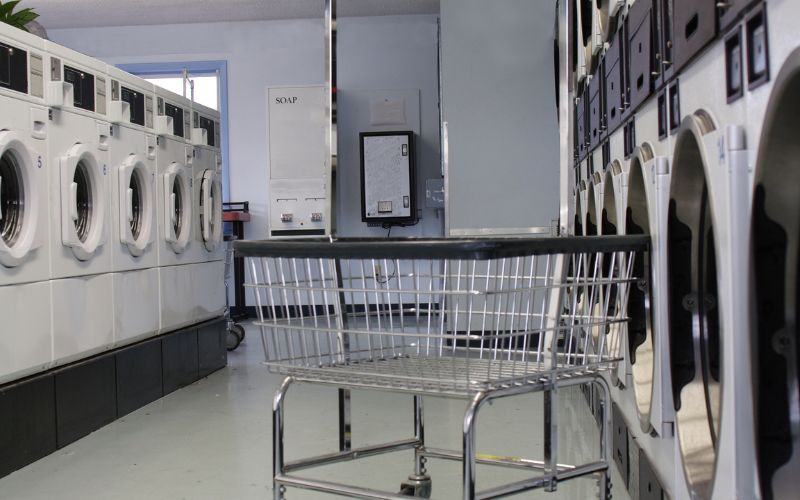
Thinking about diving into the laundromat industry? Smart move. The demand for modern laundry keeps growing, and a well-run laundry franchise can offer stable cash flow, minimal staffing headaches, and strong local appeal. But before you own a laundromat franchise, it’s crucial to understand what you’re getting into.
Here are the key factors to keep in mind when choosing the right laundry business:
1. Understand Customer Choices
People want convenience—and they’re willing to pay for it. That means clean facilities, flexible hours, fast service, and extras like Wi-Fi or mobile payment options. Small touches like folding tables and charging stations can go a long way to enhance customer convenience and build loyalty in a competitive laundromat industry.
2. Franchise Reputation
Don’t underestimate the power of a trusted name. Brands like Zoom Express Laundry or Speed Queen already have customer recognition and operational systems in place. A reputable laundry franchise gives you a leg up with a built-in customer base, tested marketing strategies, and better financing access.
3. Level of Support
Not all franchises offer the same level of hand-holding. Look for franchisors that provide hands-on training, tech support, marketing tools, and help with site selection. A solid support system can make the difference between feeling like you’re flying solo or being part of a team.
4. Business Model
Every franchise runs a bit differently. Some offer subscription-based models, others focus on drop-off service, while newer concepts might blend services inside an express laundry center. Dive into the franchise disclosure document (FDD). It’s your blueprint—detailing everything from fees to obligations. Don’t skip this step; it can protect your investment and clarify expectations.
5. Market Location
Where you set up shop matters—big time. Focus on high-traffic areas with lots of renters, students, or young professionals. The right location can make or break your laundry business. Do your homework on local competition, visibility, parking access, and proximity to apartment complexes.
6. Financing Options
Startup costs can vary. Machines, leases, utilities—it adds up. Some franchises have preferred lenders or offer in-house financing options. Be realistic about your capital needs and review available funding solutions. You don’t want to be cash-strapped before your machines finish their first spin cycle.
7. Operating Costs
Don’t just focus on startup costs—look at the long-term expenses. High-efficiency machines can slash water and electricity bills, and regular maintenance keeps your equipment running smoothly. Labor costs may be low in this business, but they still count. A clear budget helps you stay profitable from day one.
8. Growth Potential
Think beyond one location. Does the franchise system allow multi-unit ownership? Can you scale within your region? Some brands make it easier than others to expand. If you’re building a future, not just buying a job, choose a franchise opportunity with growth baked into the business model.
9. Sustainability Practices
Customers are paying more attention to eco-friendly businesses. A laundry franchise that uses energy-efficient washers, water-saving systems, or solar-powered dryers will stand out. Green features not only appeal to conscious consumers but can also cut long-term costs.
Become a Laundromat Franchisee
Getting into the laundry business through a franchise isn’t just a smart investment—it’s an entry point into a stable, lucrative industry. Whether you’re excited about running an express laundry center, a pet-friendly laundromat, or a luxury location with concierge folding services, there’s room to innovate and grow.
Owning your own laundromat franchise gives you the opportunity to build a business that meets your lifestyle, financial, and community goals. Success comes down to choosing the right partner, reading the franchise disclosure document thoroughly, and finding a franchise model that fits your long-term vision.
When you’re ready to move forward, connect with a franchise consultant. They’ll help you weigh your options, align with your goals, and guide you through the process of becoming a confident, informed franchisee.

